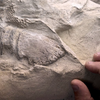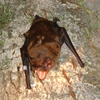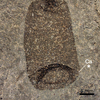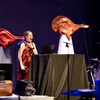The Vera C. Rubin Observatory Releases its First Photos!

One of the first photos released by the observatory!
Post Author- Ellis Nolan
The dazzling images in this article are some of the first to be released by scientists using equipment at the Vera C. Rubin Observatory in the Elqui Province of Chile. However, these images represent just the tip of the iceberg for the new facility.
The observatory captured at night
The current objective of the new observatory, named after the scientist who proved the existence of dark matter, is to compile a time-lapse video of various celestial bodies in the night sky over a period of ten years. The hope of researchers is that capturing data more frequently will lead to more discoveries, since plenty of objects in the night sky are constantly in motion. So far, they’ve been spot on: More than 2,000 asteroids have been discovered since scientists first started using the observatory.
Another early photo taken at the observatory
The amount of data the observatory is set to capture is gargantuan. Over the ten year survey, it is estimated to provide 60 petabytes (60 million gigabytes) for scientists to analyze, documenting changes and characteristics of around 40 billion celestial bodies.
The telescope of the observatory, with its massive lens
The incredible eyes of the observatory are its custom telescope and massive digital camera. Known as the Simonyi Survey telescope, it sports an 8.4 meter primary mirror with a 9.6 square degree field of view. This is a particularly large field of view for a large telescope, which contributes to the unprecedented amount of celestial objects the observatory is able to survey. The primary mirror was constructed out of 22 tons of glass in the Richard F. Carris Mirror Lab, located underneath the University of Arizona football stadium. The observatory camera sports a headache-inducing 3.2 gigapixel resolution, which not only explains the amount of data collected by the telescope but also the size of the camera. At about 6’x10’, it is roughly the size of a Fiat 500, and is the most powerful digital camera in the world.
The world's most powerful digital camera
With such stellar capabilities, the facility is on track to make some amazing discoveries. Who knows what magnificent new views of the galaxy will be next!?
Interested in learning more about Science and Technology? Checkout our Air and Space Collection Here!
Featured Product
Joe Frazier Boxing Glove
Cool Things!

Is “Paul is Dead” Dead?: Unpacking One Of Pop Culture’s Most Enduring Conspiracy Theories

Scientists Discover Hooves and Skin in Preserved Dinosaur "Mummies!"
A dinosaur discovery just in time for Halloween! In a new analysis of a group of fossils from Wyoming, Scientists have determined this group of fossils are dinosaur “mummies,” with preserved skin and even hooves.

Scientists Record a Bat Catching Birds Mid-Flight!
Bats, birds, screeches, oh my! In a reverse-Hitchcock twist, a new study reveals that a species of European bat catches and eats birds mid-flight.
Specimen Deep Dives

The House that Ruth Built: The Story of the Old Yankee Stadium

The Queen of the Skies: the Story of the Boeing 747

Old Ironsides: The USS Constitution and the Start of the U.S. Navy
Long Form Articles

The Artist Behind the Macintosh: Susan Kare and Apple Computers
While the two Steves, Jobs and Wozniak, are the most well known faces behind Apple computers, equally important to the products and culture of the company were those who crafted the experience of using their computers through design. The most notable of these visual architects was Susan Kare, a designer responsible for “humanizing” Macintosh computers.

Can I Lick It? Yes You Can!
Have you ever been unable to tell if a fossil was really a fossil, but you were too embarrassed to admit it? Have you ever wanted to lick a fossil just because, but you didn’t want to risk judgment from your peers? Well, good news! You can kill two birds with one stone! Licking a fossil can actually help you determine if it’s the real deal or just another rock.

Is It Legal To Own a Meteorite: How to Start Your Outer Space Collection!
Meteorites are some of the rarest geological specimens to be found on Earth. Of course, since these stones are not of our world, purchasing them can sometimes be a confusing process. Is it legal to own a meteorite? In short, yes! Read on for help starting your cosmic collection!

















